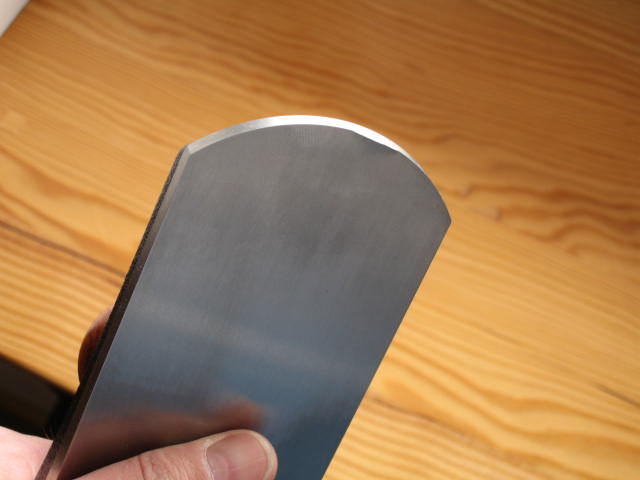Anyone have an inkling why Clifton don't use ductile iron in their bench planes? Is it something to do with keeping costs down? I was flicking through the Axminster catalogue and noticed that they do in fact make their convex and concave spokeshaves from ductile iron - or as they more poshly put it 'spheroidal graphite iron' - but the bench planes are still only made from grey cast iron. I suppose Clifton reason that you're more likely to drop a spokeshave than a bench plane.
I have to say this would really raise question marks over a Clifton purchase for me. Maybe it's different for others but now and again I tend to be a bit of a klutz and drop things/knock things off benches and to think that my pricey investment might one day end up multiplied into several not so pricey chucks on the floor doesn't bear thinking about. Lie Nielsen and Veritas definitely seem to have the edge here.
An even more bizarre choice of materials by Clifton is that for there 420 shoulder plane. Part of the selling spiel in the catalogue emphasizes that the lever arm is made of unbreakable malleable iron. But surely this only goes to highlight in a negative way that the rest of the plane is made of ever-so-breakable cast iron. Are they really trying to entice people to buy this plane with the notion that if dropped the handle certainly won't break but, er... you will have to order a new body as it will have snapped in two? It's an extreme analogy but nobody's ever sold a bike by praising the fact that it still has one wheel.
For a bevel up plane in particular I thought that the new makers were all taking advantage of ductile iron to avoid the old problem of the shallow bed chipping as found in Stanley/Record BUs. It would seem that a Clifton 420 will be every bit as prone to damage at the back of the mouth as a Record 073. Why eradicate the problem of a fragile handle with malleable iron only to neglect another important area that the weakness of cast iron causes problems in?
I have to say this would really raise question marks over a Clifton purchase for me. Maybe it's different for others but now and again I tend to be a bit of a klutz and drop things/knock things off benches and to think that my pricey investment might one day end up multiplied into several not so pricey chucks on the floor doesn't bear thinking about. Lie Nielsen and Veritas definitely seem to have the edge here.
An even more bizarre choice of materials by Clifton is that for there 420 shoulder plane. Part of the selling spiel in the catalogue emphasizes that the lever arm is made of unbreakable malleable iron. But surely this only goes to highlight in a negative way that the rest of the plane is made of ever-so-breakable cast iron. Are they really trying to entice people to buy this plane with the notion that if dropped the handle certainly won't break but, er... you will have to order a new body as it will have snapped in two? It's an extreme analogy but nobody's ever sold a bike by praising the fact that it still has one wheel.
For a bevel up plane in particular I thought that the new makers were all taking advantage of ductile iron to avoid the old problem of the shallow bed chipping as found in Stanley/Record BUs. It would seem that a Clifton 420 will be every bit as prone to damage at the back of the mouth as a Record 073. Why eradicate the problem of a fragile handle with malleable iron only to neglect another important area that the weakness of cast iron causes problems in?






